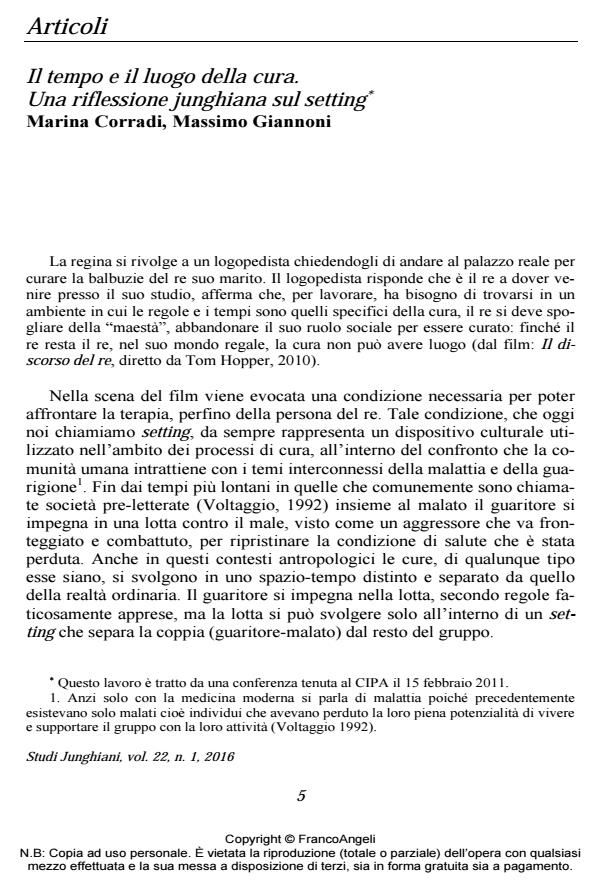The time and place of treatment. A reflection on Jungian setting
Journal title STUDI JUNGHIANI
Author/s Marina Corradi, Massimo Giannoni
Publishing Year 2016 Issue 2016/43
Language Italian Pages 22 P. 5-26 File size 357 KB
DOI 10.3280/JUN2016-043001
DOI is like a bar code for intellectual property: to have more infomation
click here
Below, you can see the article first page
If you want to buy this article in PDF format, you can do it, following the instructions to buy download credits

FrancoAngeli is member of Publishers International Linking Association, Inc (PILA), a not-for-profit association which run the CrossRef service enabling links to and from online scholarly content.
We assume that there is a relation between the setting and the psychological theory used by the analyst. Freudian analysts have always tried to underline the continuity of the setting with the ideas of its founder. The introduction of the relational paradigm brings elements of discontinuity regarding to the classical Freudian setting and imposes a reflection on the setting and its possible variations. We try to propose a definition of a particular Jungian setting based on the psychological theory developed by Jung. We underline furthermore convergences and differences of the Jungian setting in comparison with the setting as proposed by relational psychoanalysis.
Keywords: Setting, psychoanalytical theories, relational psychoanalysis, Jungian setting, enactment
- Setting e processi dissociativi Gianluigi Di Cesare, Fabrizio Alfani, in STUDI JUNGHIANI 47/2018 pp.47
DOI: 10.3280/JUN2018-047004
Marina Corradi, Massimo Giannoni, Il tempo e il luogo della cura. Una riflessione junghiana sul setting in "STUDI JUNGHIANI" 43/2016, pp 5-26, DOI: 10.3280/JUN2016-043001